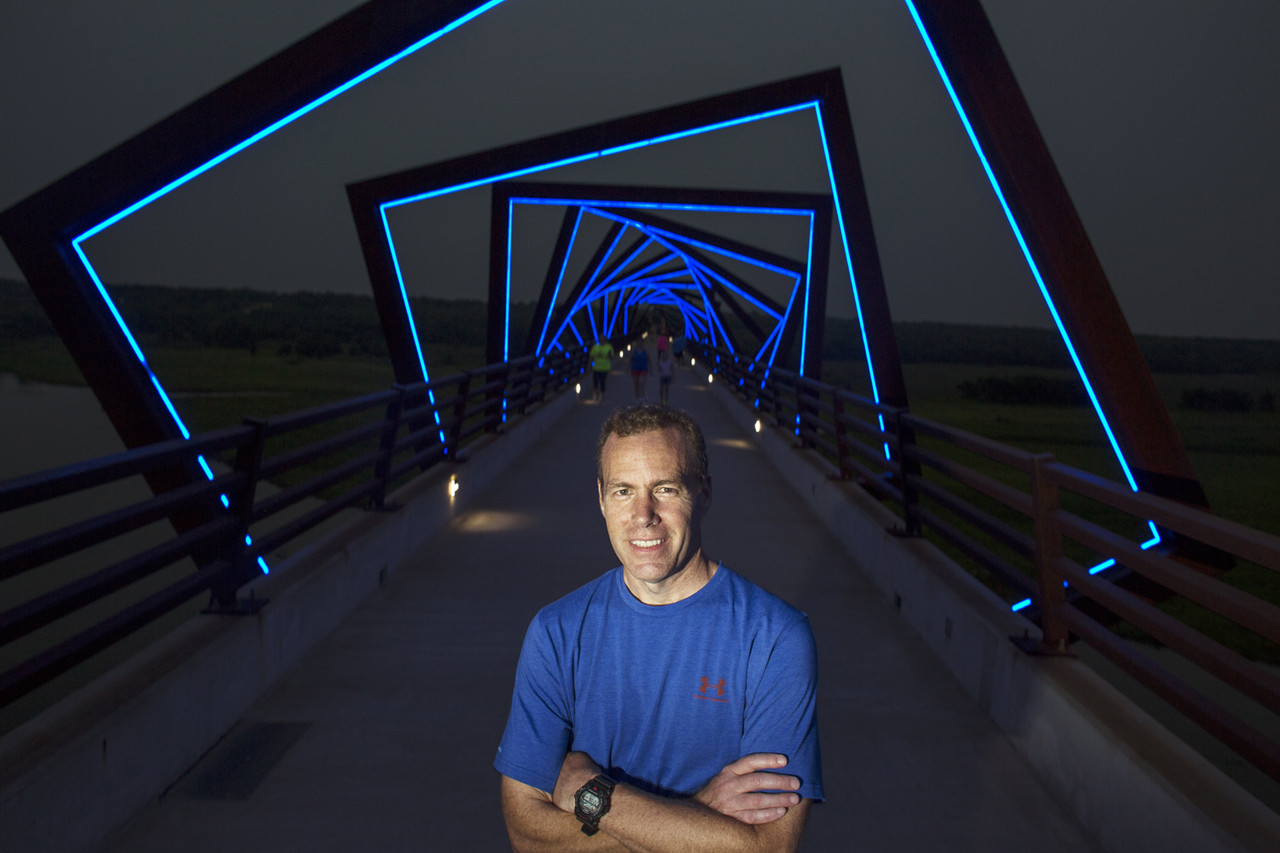
| Archive | www.flasla.org |
FLASLA's Doug Smith Featured in The Wall Street Journal!
![]() Print this Article | Send to Colleague
Print this Article | Send to Colleague

As president of the international landscape architecture firm EDSA, Doug Smith has worked in destinations as exotic as Egypt and as local as his home state of Florida.
But it was his time growing up in Bayard, Iowa, population 458, that truly shaped his understanding of nature’s scale and diversity. "My high school graduating class in 1981 was 23 people," Mr. Smith, 51, says of his hometown, which is about 65 miles northwest of Des Moines.
Surveyors designed a 1-mile grid pattern over much of the region in the 19th century, creating a straightforward breakdown of land parcels. "But Central Iowa is more diverse environmentally than you would think," Mr. Smith says. Small towns, farmsteads, creeks, river valleys and preserved woodlands are distributed throughout this grid "and these elements serve to break down the vast areas of crop fields and pastures," he says.
To access all that variety, Mr. Smith carves out some time during his annual visits to his parents’ home in Perry. There, he rents a bike and hops on the Central Iowa Trail System, old railroad beds that have been re-purposed as biking paths. His favorite portion is the 25-mile-long High Trestle Trail, about 10 miles from Perry. It crosses the Des Moines River via a bridge that gives that section of the trails its name.
"It is perched 130-feet above the valley, so it’s pretty dramatic," says Mr. Smith, who studied landscape architecture at Iowa State University.
He especially likes the art installation by David B. Dahlquist that spans the bridge. It consists of square frames made of Corten steel, which rusts into an ocher tone. Each frame is twisted at a slightly different angle. "The whole thing looks like a drilling bit to me--a reference to area’s history of coal mining," Mr. Smith says.
The installation is mounted on 41 spots on the half-mile-long bridge. "It’s lit up at night with blue LED lighting and it looks great," he says. Last summer, he loaded his wife and two daughters, ages 11 and 14, into the car and met his parents and brother’s family at a crossroads where they could walk to the bridge at dusk.
Typically, though, he visits on his bike by day and likes to stop at the interpretive panels to read about the Native Americans and the settlers who passed through the region. "For me, the High Trestle Trail represents the expansiveness of the land and the ability to repurpose old things for a modern use, which I do in my practice."
EDSA, where Mr. Smith began his career in 1987, did work in 32 countries in 2014. The firm is known for its sustainable designs, which he says means more than just planting indigenous trees.
"Wherever you grew up, that left an imprint -- the smells and sights and sounds," he says. "As a landscape architect working around the globe, you start to understand other people’s imprint; and as a practice, we try to work that cultural and economical connection into our master plans and designs."
Biking along the High Trestle Trail helps Mr. Smith reconnect to his own imprint. He likes to wake early and go for 30-mile bike rides to clear his head.
"Over time, I have grown to form a different appreciation of the rural Iowa landscape and what it means to the people and their livelihood there," he says. "At this stage in my life, I find that the lifestyle and sense of place evokes a nostalgia that is calming and reassuring to me. And when I bike there, I go totally into relaxation mode."
Originally from: The Wall Street Journal